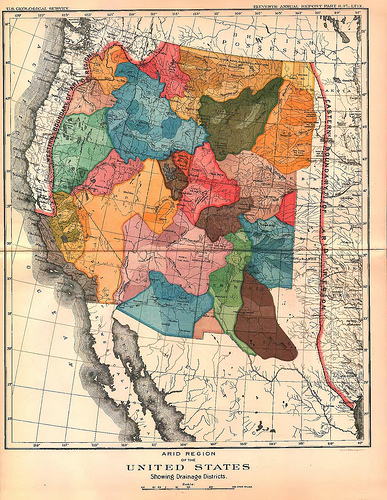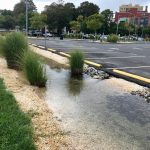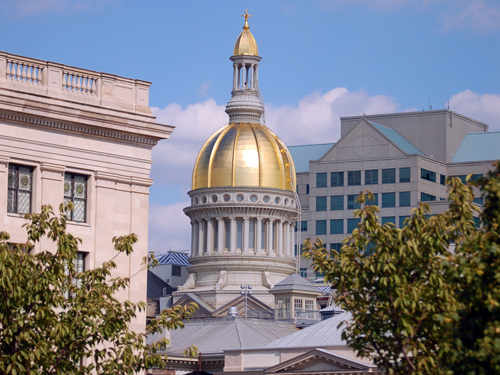New Jersey Future Blog
Governance by Watershed: What Would It Look Like in NJ?
November 15th, 2010 by Tim Evans
Strange Maps today takes a look at a map illustrating what the Intermountain West would have looked like if the US government had heeded the recommendation of explorer John Wesley Powell that state boundaries in the country’s arid region be drawn to coincide with drainage basins. (A larger version of the map is here, in pdf form.)
While the resulting borders produce a map that departs wildly from the collection of “square states” that we recognize today, the idea of governance based on water availability is not so far-fetched. Availability of water for drinking and for irrigation is one of the factors that impose (or, at least, should impose) natural limits on how much development (including agriculture) a given region can sustain. Fights among Western states over rights to the waters of the Colorado River – or the intra-California battles over the Los Angeles Aqueduct, which siphons water from the upstate Owens River Valley southward to a thirsty Los Angeles basin – might have been averted if each state were assigned a specific watershed and were instructed to limit its growth to only what that watershed could support.
Water availability is much less of an issue in the wet, humid East than in the arid West. Nonetheless, it was important enough to serve as the animating force behind the 2004 passage of the Highlands Water Protection and Planning Act, with the Highlands region [pdf] of northwestern New Jersey being frequently cited as the source of half the state’s drinking water.
What would the map of New Jersey look like if its counties were drawn to follow watershed boundaries? The New Jersey Department of Environmental Protection has the answer to that question, with a map illustrating its partition of the state into Watershed Management Areas. (There are 20 WMAs, only one fewer than the actual number of counties in the state.) The map allows you to click on any individual WMA for more information about specifically which tributaries and water bodies are encompassed by it.
A more detailed DEP document [pdf]describes what a watershed is, supplies names for the 20 WMAs, and indicates which rivers and streams are part of which WMA. It also describes how development affects water quality – by adding impervious surfaces that limit how much rainfall can soak into the ground; by producing greater volumes of stormwater runoff that can erode stream channels; by depositing litter, automotive and yard chemicals, and pet waste into the water cycle.
Of course, New Jersey’s county boundaries are unlikely to be radically redrawn any time soon. Nor are the state boundaries of the American West. But whether it’s water quantity in an arid region, or water quality in the country’s most developed state, there are plenty of good reasons why decisions about what, where, and how much we build ought to take watersheds into account.
Related Posts
Tags: Land use, Regionalism, Water quality, Watershed

















[…] this post, see Frank Jacobs at StrangeMaps, Timothy Hurst at Ecopolitology, Ben Jervey at Good, and Tim Evans at NJ Future. Thanks especially to Frank for getting people engaged. Federal, Maps « […]